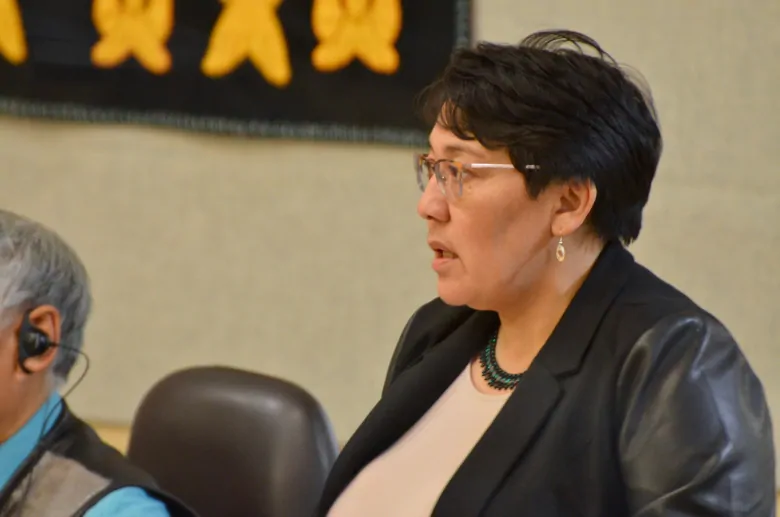Northern housing ministers join forces to face crisis

Housing ministers from all three territories are brainstorming ways to lobby the federal government for more support in the North.
The trio have a meeting next month to talk about issues that aggravate the northern housing crisis, like aging infrastructure, lack of housing markets, short construction seasons, limited access to contractors for maintenance, and low home ownership.
Patterk Netser, the minister responsible for the Nunavut Housing Corporation, and his counterpart in the Northwest Territories Paulie Chinna have already met with the federal minister responsible for the Canadian Mortgage and Housing Corporation, Ahmed Hussen.
“Both of our territories are in the grips of a severe housing crisis. We’re both desperate for major federal investment to build thousands of critically needed social housing units,” Nester said in a ministers statement on Friday, Feb. 21. “We both need greater support for homeownership programs to get our people into their own homes.”
They’ve invited Hussen to a meeting of northern housing ministers in Iqaluit in June.
MLAs organized on housing talks
But also on Friday, Netser fielded a slew of questions from MLAs on long standing housing problems, like vacant staff units, jobs unfilled for lack of housing, and waiting lists that last for years.
“We will be asking many questions about housing this morning,” standing committee Chair John Main said in his members statement at the beginning of the day’s sitting.
It’s not the first time MLAs in this assembly have organized their questions along one theme.
During the most recent fall sitting, members spent full question periods grilling cabinet on single issues, like elder care and housing.
That led the government to announce it would launch an independent review of how it allocates public housing in communities. Netser said that work is set to start April 1.
The regular members based many of their questions on the government’s Blueprint for Action on Housing in Nunavut from 2016.
Quoting that blueprint, Main explained that a need for more than 3,000 housing units in the territory hasn’t decreased in the last 15 years, and that investments the government is putting into housing have barely managed to meet population growth — leaving the housing need largely static.
The MLAs had some other ideas for the government to consider in its coming review.
Rankin Inlet North-Chesterfield Inlet MLA Cathy Towtongie said she wants the government to encourage high income earners who live in public housing to buy their own homes. She said there are over 300 tenants now in the territory’s highest income bracket who are living in public housing.
Amittuq MLA Joelie Kaernerk said he wants to see tenants charged less to live in housing that is infested with mould. He said he’s seen ice build up on houses that melts and turns to mildew.
The government has spent $10 million so far on mould remediation.
Pangnirtung MLA Margaret Nakashuk said her community needs housing options for single people and young couples. Those groups make up half of the 380-person waiting list in Pangnirtung.
Pond Inlet MLA David Qamaniq said the government needs a priority list for retired people who are forced to move from their staff housing and into public housing when they finish their government job. He said the staff housing system isn’t set up for Inuit who live full time in their community.
Gjoa Haven MLA Tony Akoak said the government should have an awareness campaign for tenants in public housing to make sure they have insurance for their belongings in case of fire.
Aggu MLA Paul Quassa asked Netser to commit to starting conversations about housing options with regional Inuit organizations.
Communities are in competition, minister says
Netser urged MLAs to make sure their constituents are keeping their names on local housing waitlists.
“Each community competes with another community for public housing. We always look at the numbers first,” Netser said.
“All communities need houses built and unfortunately, not all communities get houses built each year.”



